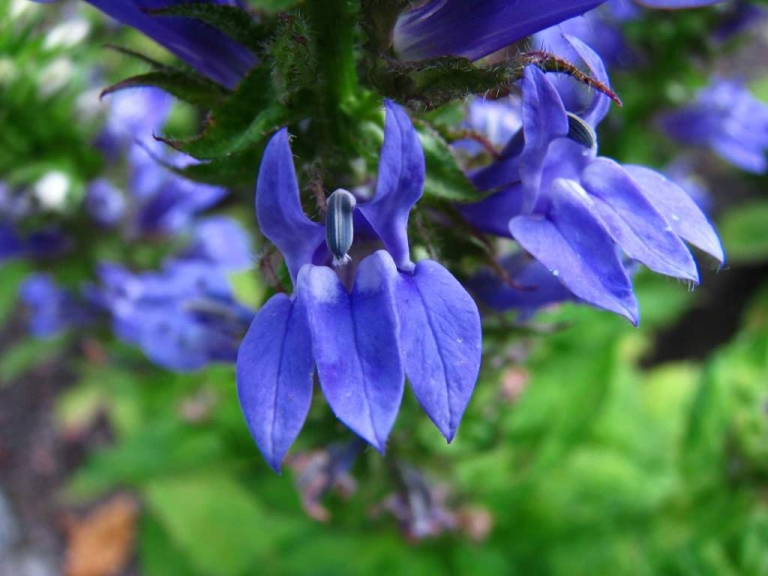
These days it seems that just about every gardener I speak with is searching for pollinator plants. There’s a major focus on Lobelia cardinalis, and with good reason, although its cousin Lobelia siphlitica is being sadly overlooked, and not with good reason.
Lobelia cardinalis, also known as the “Cardinal Flower,” surely does its job attracting swarms of a multitude of butterfly species, hummingbirds, and several species of bees. There’s no doubt about that.
However, Lobelia siphilitica also attracts many interesting insects with its nectar and pollen. You may not see as many butterflies or hummingbirds, but you will see many different bee species, including yellow-faced bees, sweat bees, small carpenter bees, and bumblebees.
And the display that Lobelia siphilitica puts on occurs two or three weeks after Lobelia cardinalis in late August to mid-September when not much else is happening in the garden.
One of the most used common names of Lobelia siphilitica says it all—“Great Blue Lobelia.” It’s a more robust and taller plant than Lobelia cardinalis, and the deep blue color of the flowers is striking, to say the least. While both species love to have their feet wet, Lobelia siphilitica is more dependent on moisture, that’s why you see it growing more often in roadside ditches.
I’ve seen it attain heights of more than 36 inches in areas where it rarely dries out. In a drier situation, such as a perennial bed that doesn’t get any supplemental water, it will reach heights of 12 to 18 inches tall. These plants can take full sun if they are constantly wet, and if they’re happy, they’ll naturalize well and provide you with a long bloom period of the deepest blue color that you could ever wish for.
Many folks labor under the misconception that the lobelias are in the Lamiaceae or mint family, but they happen to be members of the Campanulaceae (bellflower) family, home to Campanula, Platycodon, and many genera of tropical plants. Lobelia siphilitica is native to all but nine western states and several provinces in mid-Canada.
Deer and other varmints pay them no mind, and I’ve never seen any insect pests or any type of disease affect them. Both species die back to a rosette to over-winter, and if they happen to form multiple rosettes, which they usually do, you can pry the new ones off in the spring when they have sufficient roots and replant them. The seeds produced are dust-like and can be sown over grit in pots to produce copious amounts of seedlings.
In case you’re wondering where the name came from, the genus name, "Lobelia" honors Matthias de l'Obel (1538-1616), a French physician and botanist, and the specific epithet "siphilitica" arose from a prior medicinal use of the plant in the treatment of venereal disease. Don’t try this at home, kids!
Sign up for Barry Glick's newsletter at Sunshine Farm & Gardens, provider of uncommonly rare and exceptional plants for the discriminating gardener and collector.






























